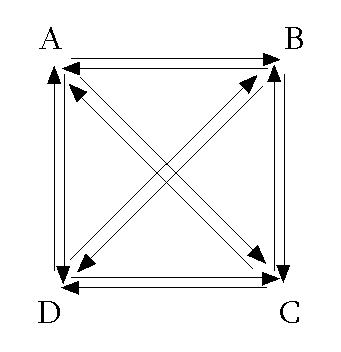 When this circularity of action exists between the parts of a dynamic system, feedback may be said to be present. The definition of feedback just given is that most in accord with the spirit of this book, which is concerned essentially with principles. Other definitions, however, are possible, and there has been some dispute as to the best; so a few words in explanation may be useful. There are two main points of view that have to be considered. On the one side stand those who are following the path taken by this book – those whose aim is to get an understanding of the principles behind the multitudinous special mechanisms that exhibit them. To such workers, “feedback” exists between two parts when each affects the other, as for instance, in where i stands for either i’s state or i’s transformation for y’s value affects how x will change and so does x’s value affect y. By contrast, feedback would not be said to be present in for x’s change does not now depend on y’s value; x dominates y, and the action is one way only. On the other side stand the practical experimenters and constructors, who want to use the word to refer, when some forward effect from states to transformations can be taken for granted, to the deliberate conduction of some effect back from transformations to states by some connection that is physically or materially evident. They object to the mathematician’s definition, pointing out that this would force them to say that feedback was present in the ordinary pendulum between its position and its momentum – a “feedback” that, from the practical point of view, is somewhat mystical. To this the mathematician retorts that if feedback is to be considered present only when there is an actual wire or nerve to represent it, then the theory becomes chaotic and riddled with irrelevancies. In fact, there need be no dispute, for the exact definition of “feedback” is nowhere important. The fact is that the concept of “feedback”, so simple and natural in certain elementary cases, becomes artificial and of little use when the interconnections between the parts become more complex. When there are only two parts joined so that each affects the other, the properties of the feedback give important and useful information about the properties of the whole. But when the parts rise to even as few as four, if every one affects the other three, then twenty circuits can be traced through them; and knowing the properties of all the twenty circuits does not give complete information about the system. Such complex systems cannot be treated as an interlaced set of more or less independent feedback circuits, but only as a whole. For understanding the general principles of dynamic systems, therefore, the concept of feedback is inadequate in itself. What is important is that complex systems, richly cross-connected internally, have complex behaviours, and that these behaviours can be goal-seeking in complex patterns.  |